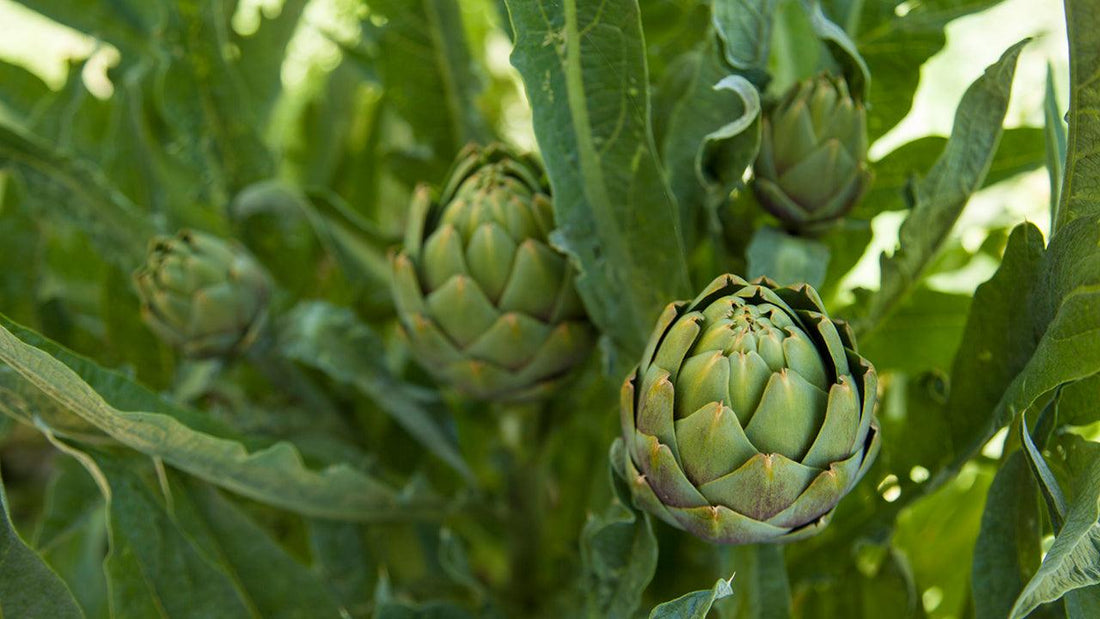Cultural Requirements
Artichokes are native to the Mediterranean. In warm areas, (USDA Zones 8-9) such as California, artichokes can be treated as perennials and left in the ground for 6–7 years until they need to be divided. In colder regions, artichokes will die back to the ground, but may survive as perennials if the roots don’t suffer in a prolonged freeze. Help protect your roots from winter frost by mulching heavily. Plants grow 4’ high and 6–8’ wide with silvery-green leaves. Artichokes form from big flower buds and if left to grow, will blossom into beautiful, purple ornamental flowers.
Heeling In
When your bare root plants arrive, open the plastic bags immediately. It is best to plant right away, within a week of delivery, however if you cannot plant right away, you may “heel in” the plants to protect them and keep them alive (but still dormant) until you are able to plant them in their permanent spot.
Outdoors: To heel in bare root plants outside, pick a location that is shielded from wind. Dig a trench about twice as deep as the roots are long, with one side of the trench sloping at a 45° angle. Place in the hole roots side down, so that the plant is supported by the sloping side. Cover the roots with soil or sand and gently tamp down to avoid air pockets. Periodically check the root area, keeping the soil moist.
Indoors: To heel in bare root plants indoors, whether due to snow or a frozen ground, choose a cool place like a root cellar, basement, or garage. It’s important to choose a place where the temperature stays between 38°F and 45°F. This is important so the roots neither freeze, nor does the plant break dormancy. Place the roots in a container with soil or sand and be sure to keep the root area moist.
Planting & Growing
Plant in the winter (warmer climates) or in the spring (cold areas). Plant crowns 6–8” deep and 6’ apart in well-drained soil, rich in organic matter. If treating as annuals, use closer spacing between plants. Protect with shade in hot areas (soil temperatures above 85°F will prevent bud-setting). After growth starts, water thoroughly once a week, wetting entire root system. Artichokes are susceptible to aphids, snails, slugs and gophers. Use Peaceful Valley’s gopher baskets, or wire-in areas where gophers are a problem. Harvest the buds while they are tight and plump. When the leaves start to yellow, cut off old stalks near the ground. In cold winter areas, cut the tops to 1’ in fall.

